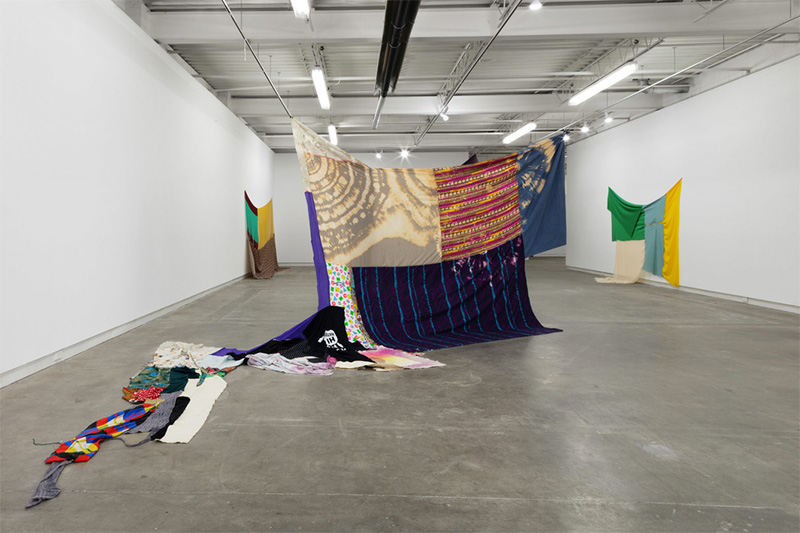
- Source: ARTFORUM
- Author: ESME HOGEVEEN
- Date: NOVEMBER 25, 2019
- Format: DIGITAL
Eric N. Mack
SCRAP METAL
Eric N. Mack ’s sewn, taped, painted, bleached, and dyed assemblages evoke the ephemeral architectures of circuses, children’s forts, and encampments as much as the decorative vocabulary of high fashion. With their altered, locally gathered, secondhand materials, the works pose questions about the reasons, from playful to desperate, behind building precarious structures.

Eric N. Mack, Dye Lens, 2019–20. Courtesy of Morán Morán
Paramount, 2015, the largest hanging piece on view, is suspended by ropes in the center of the gallery. Its sail-like rectangular swath of fabric is almost always visible as one moves throughout the space, and functions as a theatrical backdrop, echoing Sam Gilliam’s massive drapes. The monochromatic fabric ends, silk scarves, quilted moving blankets, newspapers, and magazines that make up Mack’s other paintings (as he sees them) exude memories of former utilitarian lives. In their newly abstracted and modified forms, his ingredients also suggest that his process is somewhat diaristic. In The Endless Seed of Mystery, 2018, stained newspaper clippings from The Washington Post advertise condos, and The Harlem Community News shares event listings for Black History Month. For part of the floor work Dye Lens (Title track), 2019, the artist partially dyed a program from the Ryerson Image Centre listing events for the photography exhibition “The Way She Looks: A History of Female Gazes in African Portraiture.”
Other references return to a commentary on value and quotidian objects: A thrift store price tag dangles from a red scarf in And Re said: Ras Protective Collection, 2019. In employing both excess (as in the swaths of fabric that fold and pile on the ground) and scarcity (as in the modest source materials), Mack recalls and replicates cycles of valuation, accumulation, neglect, and eventual reuse or decay, without a clear critical lens. The works feel unresolved—and perhaps that’s the point.

